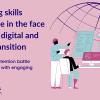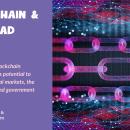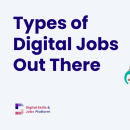Beyond Green ICT: building a truly sustainable digital future (deep-dive)
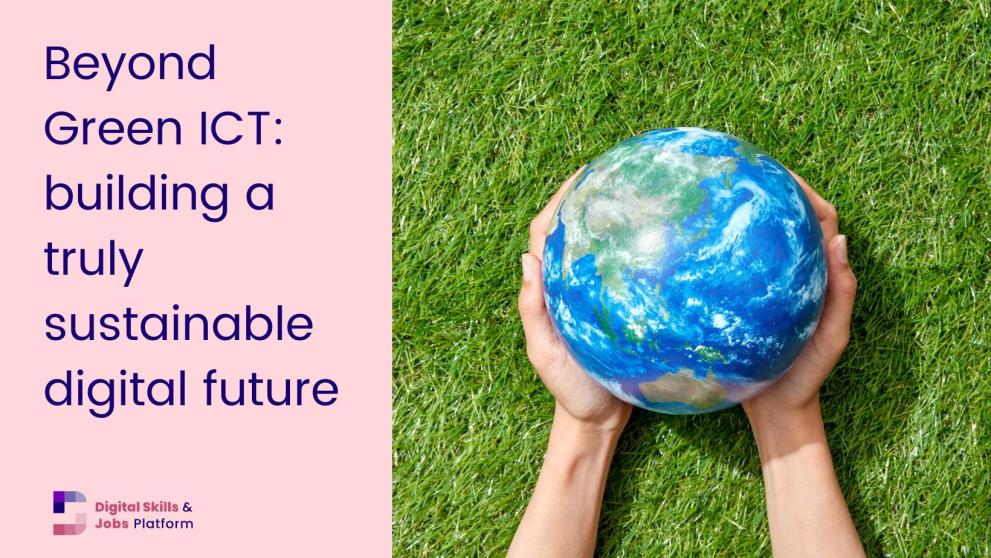
As digital technologies become deeply embedded in every aspect of our lives, the sustainability of ICT (Information and Communication Technologies) has become a key concern for society. It's no longer enough to focus on “green ICT” alone, which primarily looks at energy efficiency and environmental impact. The concept of sustainable ICT needs to be broader, aligning with the United Nations’ and European Union’s definition of sustainability, which includes environmental, economic and social dimensions.
This article explores how ICT affects all three pillars of sustainability. It shows how digital infrastructure (from massive data centres to everyday connected devices), contributes to environmental challenges, including energy consumption, water usage, and e-waste. It highlights economic concerns such as short-sighted investment decisions, hidden maintenance costs, and planned obsolescence. And it underscores the social impact of technology ¬— from accessibility and usability to digital inequality, fair labour conditions, and ethical concerns in AI.
Sustainable ICT requires long-term thinking, inclusive design, smart regulations and active engagement from all stakeholders — governments, companies, professionals, and users. From coding practices to purchasing habits, each choice we make can contribute to a more sustainable digital world. This paper outlines concrete areas for action, calling for a shift beyond the traditional “green IT” mindset to one that fully supports a balanced, sustainable digital future.
Introduction
The interest in the sustainability of Information and Communication Technologies (ICT) is a logical outcome of two converging trends: the steady spread of digital tools into every corner of life, and society’s increasing commitment to making every activity more sustainable. Because the digital world already accounts for a sizeable share of the economy and of resource consumption, progress on overall sustainability is impossible without a greener ICT sector. At the same time, ICT can enable more sustainable solutions in other sectors — a phenomenon usually labelled “green by IT”, which is beyond the scope of this article.
In Europe the topic may still feel relatively new, gaining momentum only after the European Union framed the twin transition (simultaneous digital and green transformation) in 2019 and reinforced it through later legislation and debate in the European Parliament. Amongst the legislative pieces impacting EU SMEs most are the General Data Protection Regulation (GDPR), the Directive on measures for a high common level of cybersecurity across the Union (NIS 2 Directive), and the AI Act, with some studies projecting a total cumulative cost of compliance for all SMEs across the corresponding to about EUR 53 billion. Yet, the idea of “green” ICT stretches back more than three decades. In 1992 the U.S. Environmental Protection Agency launched the voluntary ENERGY STAR label to spotlight energy-efficient monitors, climate-control equipment and other technologies; the sleep-mode feature that soon appeared on almost every electronic device is its most visible legacy. The term “green IT” itself entered the mainstream in 2007 with Gartner’s report Green IT: The New Industry Shock Wave (Green IT: The New Industry Shock Wave, 2007). Academic output peaked between 2013-2016 and surged again from 2018-2021 (Paul et al., 2023). Traditional green-computing work has focused on direct environmental impacts such as data-centre operation or energy use at the user’s end.
The definition of sustainability used by the United Nations and the European Union is broader than environmental footprint alone: sustainable development “meets the needs of the present without compromising the ability of future generations to meet their own needs.
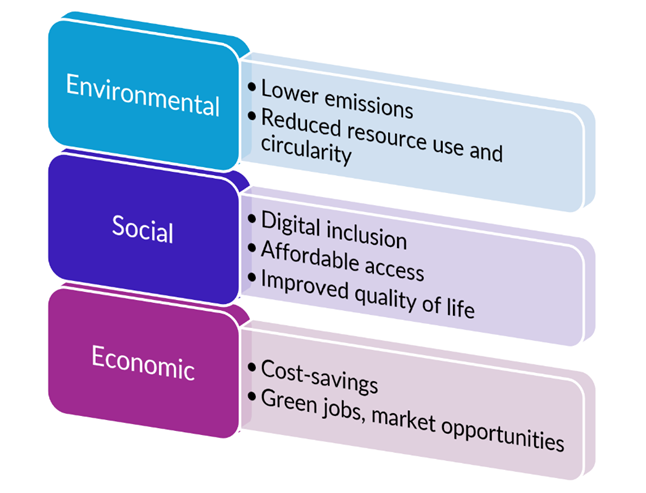
The 2002 World Summit on Sustainable Development refined this into three mutually reinforcing pillars — environmental protection, economic development and social development. See Figure 1 for an illustration of the main aspects.
This article maps out how modern Information and Communication Technology (ICT) can - and must -contribute to each of those pillars.
Environmental impact: ICT greenness
How much energy does digital life consume?
The environmental impact of Information Technology (IT) is perhaps the most widely discussed aspect of sustainability in the sector. The production, use and disposal of IT equipment and infrastructure contribute to a range of environmental problems, where energy and water consumption as well as recycling and waste management are common aspects with negative consequences, and the most evident to the public.
The environmental impact of IT is perhaps the most widely discussed aspect of sustainability in the sector. Two possible perspectives, frequently intertwined, can guide the analysis of the environmental impact of IT: the one of centralised and common IT resources and infrastructure (e.g., data centres and communication networks) and the one of individual distributed devices and activities (e.g., equipment and activities of everyone using digital technology).
- Centralised infrastructure: according to a 2023 study by the International Energy Agency (IEA), global data-centre electricity use in 2022 totalled 240–340 TWh — equalling around 1-1.3 % of all electricity consumed worldwide. Added to this is roughly 110 TWh for cryptocurrency mining, much of it outside traditional data centres.
- Key growth drivers:
- Data-intensive services (video streaming, cloud gaming, AI inference).
- Exploding mobile traffic — forecasted to quadruple as 5G expands.
- Energy-hungry proof-of-work blockchains (e.g., Bitcoin) and large-scale AI training.
- Positive countertrends:
- Corporations that run hyperscale facilities are bulk-buying renewable electricity (≈50 GW-on par with Sweden's total capacity).
- New regulations, standards and voluntary certifications push for ever-higher efficiency.
Why is water consumption the hidden issue for data centres?
Another important relevant environmental impact of data centres is water consumption, directly used for cooling purposes. ICT equipment generates heat, and to avoid damages to components, safe ranges of temperature must be ensured. In the case of big centres, the chilling equipment normally uses water circuits, with evaporation acting as a mechanism for lowering temperature, therefore leading to loss and the need for constant replacement of liquid.
Unfortunately, many centres were designed to use potable water extracted from local resources, with negative impact on the surrounding area. Many different strategies are now increasingly being implemented in data centres to reduce the impact of water extraction on local communities:
- Smarter design: hot-aisle containment and liquid cooling reduce the volume that must be chilled.
- Alternative sources: rainwater reservoirs and grey-water reuse cut demand for drinking water.
- Novel coolants: low-boiling fluids can remove heat more efficiently than water.
- Location choices: underground or naturally cool sites keep temperatures stable year-round.
Standards, certifications, quality labels and regulations are helping to move companies even faster towards efficiency in water consumption (apart from evident benefits in energy and supply of water) aspiring to be progressively neutral.
What can everyday users do to cut their footprint?
While the above part weighs on professionals and companies, all users of digital technology may contribute to saving energy in data centres. Deleting old, irrelevant files and mails frees space in servers and storage facilities, removing unnecessary images from emails makes files smaller requiring less processing, using compressed formats reduces data transfer and storage. Other measures one can take include: watching videos in lower resolution, reducing the use of AI without a specific purpose and as a search engine, unsubscribing from no-read lists and groups, or using chat instead of long email chains. Make sure you delete obsolete files and emails — less storage means fewer active servers. And that’s not all you can do. To reduce server load and minimise your digital and environmental footprint, you also can:
- Compress or resize images into smaller ones before sending them.
- Stream in “good enough” rather than optimal resolution.
- Disable unused AI assistants that constantly poll servers.
- Choose chat messages for quick questions instead of long e-mail threads.
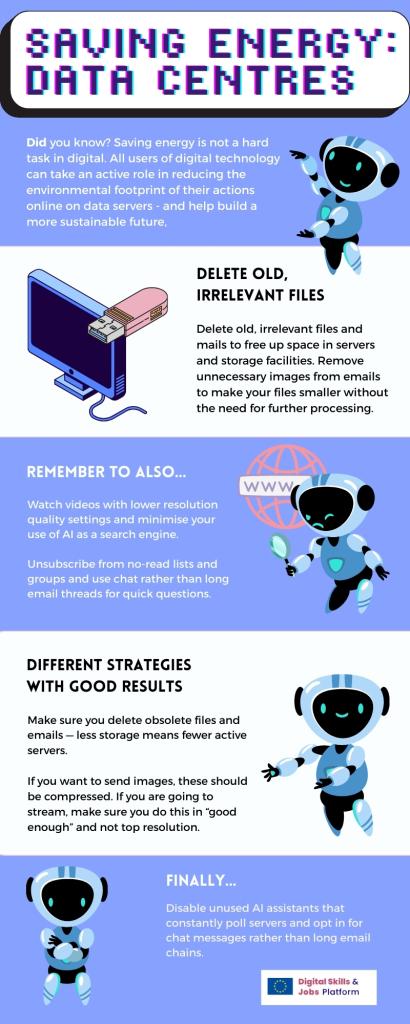
While the action by IT services providers and big companies using their own large infrastructures and centres, and their professionals, concentrates a vast amount of the environmental impact of IT, the universe of distributed equipment in each home and in non-IT SMEs also has a strong impact – especially in view of the billions of devices and their corresponding activity around the globe. Statista estimates 5.6 billion of digital users in the world in 2025 as well as nearly 20 billion of connected devices. Obviously, energy and waste or even cooling for all those devices and their usual components and externals complements (e.g., printers, scanners, etc.) also has a big environmental global impact not for the individual contribution of each site but also in terms of the sheer number of them. The awareness of this impact amongst the billions of users and their training to follow best practices (e.g., adjusting settings of energy saving in equipment, enhancing efficiency avoiding unnecessary processes, etc.) could produce a very beneficial effect on the environment, so free understandable educational resources like the gamified app of the GreenCo project can contribute to that.
Can the circular economy close the loop on e-waste?
In this context, it is also important to remind that the manufacturing of IT equipment requires significant amounts of energy, water and especially raw materials, including rare earth minerals, which are often extracted using environmentally damaging methods. Promotion of circular economy, emphasising reuse, recycling, and recovery of resources to minimise waste and reduce demand for raw materials, is essential. Additionally, the disposal of obsolete IT equipment generates electronic waste (e-waste), which contains hazardous materials not always easy to be treated and that can pollute soil and water. Standards and EU regulation is addressing this issue by setting targets for the collection, recovery, and recycling of e-waste. User and consumers can contribute to decrease this pressure by keeping the devices as long as possible, trying to only update specific components if totally needed to maintain their operational capacity.
It is also possible to opt for the purchase of refurbished electronic equipment, resisting the pressure of commercial actions of manufacturers or even from our own social context that induce to purchase the latest model or device as an indispensable object for ostentation or comfort. Unfortunately, manufacturers are often behind the so-called planned obsolescence, a business strategy where products are designed to become obsolete or stop working within a specific timeframe to encourage consumers to buy replacements. This strategy uses design flaws, software updates, change in style or formats or scarcity or high cost of spare parts in order to increase sales by making existing products unusable or less desirable before their natural lifespan. It produces both an economic harm to buyers and adds extra environmental impact increasing waste and resource depletion for manufacturing.
Economic sustainability
Why focus on the total cost, not just the purchase price?
While digital solutions add sustainability to business, professional and personal activities, they also require careful management and analysis to ensure their economic sustainability over time. It is not unusual in decision-making for technology investment to be influenced by the initial cost of acquiring equipment to a high extent: because hardware is a tangible asset people can see and by the up-front price of software or data, which are not always well understood. Yet the Total Cost of Ownership (TCO) represents a comprehensive assessment of all costs associated with acquiring, using and disposing of IT assets, including energy, maintenance, updates and disposal.
- Hidden slice of the bill: studies show that maintenance alone can swallow 40-60% of a software product’s life-cycle expenditure.
- Different from other products: IT systems often need continuous updates, sometimes to fix design flaws, more often to comply with new laws or to support new devices and features.
- Human resource impact: in business software, 40-60% of developer time goes to maintenance rather than new features.
Why it matters: budgeting only for the sticker price risks under-funding the updates and skilled people needed to keep a solution secure, compliant and useful. Over time that shortfall forces emergency fixes or even full replacement which costs far more.
How do poor design and “technical debt” drain resources?
Unfortunately, poor design or sloppy development can make continued operation either economically or technically unfeasible, wasting money, time and skilled labour and frustrating users who lose service continuity. Two key ideas help explain this risk:
- Maintainability: well-structured, well-documented code is easier and cheaper to improve.
- Technical debt: shortcuts taken during development create an invisible “debt” that must be repaid later on through expensive refactoring and incident resolution. Gartner warns that about 40% of infrastructure systems carry technical-debt concerns that hurt performance and reduce customer satisfaction.
Real-life analogy: choosing quick-dry paint might let you finish decorating today, but if it cracks next year you will spend double scraping and repainting. Likewise, rushing software out the door without proper documentation or tests brings short-term wins but long-term bills.
Benefit of doing it right: investing in clear architecture, automated tests and documentation up front keeps future change affordable, preserves agility and protects service quality.
What pricing tactics threaten long-run affordability?
Another problem for long-term economic sustainability is the commercial strategy of some solution providers that may lead users to believe long-term costs will stay low or even free. Typical tactics include:
- Freemium to premium: launch at zero cost to build a critical mass, then introduce paid tiers or raise prices once users are locked in.
- Feature slicing: basic users lose functions unless they move to a more expensive plan.
- Usage creep: low per-user or per-call fees look harmless until data, AI or API traffic explodes.
Example: Many cloud productivity suites started at a few euros per month. Today enterprise editions can cost ten times more. AI services popular in 2025 may follow a similar path once their user base feels dependent.
Why to plan ahead: mapping realistic five-year scenarios of user numbers, data volume and feature needs helps avoid budget shocks and rushed migrations.
How planned obsolescence undermines sustainability
Planned obsolescence, designing products to become outdated or hard to repair, forces premature upgrades, hurting both wallets and the planet. Strategies include:
- Design flaws or sealed components that block simple repairs.
- Software updates that slow older devices or drop support.
- Scarce or pricey spare parts that make repair uneconomic.
Counteractions:
- Keep devices as long as possible, upgrade only critical components.
- Consider refurbished equipment instead of brand-new models.
- Support right-to-repair legislation and choose vendors that publish spare-parts catalogues.
Why it pays off: extending device life cuts capital expenditure, reduces e-waste and eases pressure on rare-earth mining, delivering both economic and environmental gains.
Key take-away: economic sustainability in ICT hinges on seeing beyond the up-front price. By calculating full TCO, designing for maintainability, scrutinising vendor pricing strategies and fighting planned obsolescence, organisations and individuals can keep their digital solutions affordable and resilient for the long haul.
Social sustainability
How can digital solutions support equality, inclusion, and well-being for all?
Digital solutions should also ensure their social sustainability, understood as how technology is designed and used to promote social equity, well-being, and address social challenges. This means ensuring that digital systems and services benefit all members of society, including the most marginalised and vulnerable ones. Doing so not only strengthens social inclusion but brings a number of tangible advantages, such as broader user adoption, increased economic value, improved corporate social responsibility, and stronger public trust.
Many aspects of IT solutions can actively contribute to the social sustainability of technology. One essential factor is digital usability, which makes it possible for all types of users to benefit from technology. By simplifying and improving the clarity of user interfaces, digital products and services become easier to understand and operate for people with varying levels of digital skills. This is especially important for those who have had limited education or exposure to digital tools, such as older individuals or marginalised community members. When interfaces are more intuitive and human-friendly, they also reduce the physical and mental stress often linked to technology use — protecting eyesight, minimising confusion, and promoting general user well-being.
Closely related to usability is digital accessibility, which specifically focuses on adapting devices, systems, and content to ensure they are usable by people with disabilities — whether sensory, physical, mental, or cognitive. Accessibility means designing content and tools that can work with assistive technologies such as screen readers for blind users or subtitles for those with hearing impairments. This approach guarantees that everyone can benefit from digital services, regardless of their physical or cognitive conditions. On EU level, this is ensured by the Web Accessibility Directive, which specifically focuses on the digital accessibility of public sector websites and mobile applications; and especially the European Accessibility Act (EEA), the cornerstone legislation on accessibility in the EU. The Act aims to ensure that key products and services are accessible to people with disabilities. Adopted in 2019, it is coming into force as of the summer of 2025.
Another important element is the wide localisation of digital tools and platforms, which ensures that content and interfaces are available in multiple languages and adapted to local cultural contexts. Without localisation, people from minority communities may be forced to set aside their own languages or norms just to use digital tools, which reinforces exclusion. By localising services, developers help preserve linguistic and cultural diversity while also expanding their user base.
Digital sustainability must also address the combat of misinformation and digital overuse. Preventing the spread of fake news is not just a regulatory issue — it’s a social imperative. Harmful falsehoods can lead to real damage, especially when they target specific individuals or vulnerable groups. Similarly, issues such as excessive screen time, game or mobile phone addiction, and the influence of social media can negatively affect individual well-being, especially among youth. Although regulations exist, unethical digital marketing tactics remain widespread. Users can be tricked or manipulated through misleading content, clickbait, or disguised advertisements. Tackling this requires a mix of design ethics, regulation, user awareness, and critical thinking.
Ethics in digital systems is another core pillar of social sustainability. This applies especially to AI systems and data governance. Solutions must be developed and implemented in ways that respect user privacy, ensure fairness, and provide transparency and accountability. Information bias in algorithms, discriminatory outputs, or opaque data practices can reinforce inequalities if not addressed. Ethical principles must therefore be built into the design, training, and deployment of digital systems and relevant EU legislation such as the AI Act, the Digital Services Act, and the Digital Markets Act tackle this head-first.
Bridging the digital divide is equally vital. There is still a wide gap between people who have access to technology and the necessary skills, and those who do not. This is particularly true in underserved areas or among low-income communities. As stated in the European Commission’s 2025 “State of the Digital Decade” report, the key domain of basic digital skills in the EU shows unsatisfactory progress, representing a systemic barrier to the EU’s digital transformation and inclusivity. Initiatives focused on digital inclusion and literacy can ensure all citizens, regardless of geography or socioeconomic status are able to participate fully in the digital age.
Finally, fair working conditions across the technology supply chain are essential. Many tech products are manufactured in countries where labour costs are lower, and regulations may be less strict. Ensuring ethical practices in these environments means promoting safe working conditions, equal opportunity, and fair pay, not only for highly skilled IT professionals but for all workers involved in development, assembly, and logistics. By encouraging ethical sourcing and responsible labour practices, digital sustainability supports human dignity throughout the lifecycle of a product or service. Fair working conditions in the European Union are part of a well-shaped, robust policy and legal framework, particularly in the face of changing labour markets, the impact of digitalisation and advanced technologies, and new ways of work, such as platform work (the European Social Agenda, the European Pillar of Social Rights Action Plan, etc).
How can individuals contribute?
Mere citizens and digital users can also contribute to social sustainability through small but meaningful everyday actions. Most word processors, for example, already offer built-in tools to support digital accessibility, such as alt text for images or layout checks for screen readers. Being informed about labour practices in tech manufacturing can help consumers choose more ethical brands or avoid supporting exploitative industries. And developing one’s digital critical thinking can reduce the spread of misinformation, while also resisting unethical marketing and manipulative content.
This article has shown how the relevance of sustainability in IT extends well beyond its environmental impact. A complete approach to sustainability in the digital world must integrate environmental, economic, and social dimensions — each one reinforcing the other. Only when all three are addressed together can digital technologies truly contribute to a fair, inclusive, and sustainable future.
Further reading
The full text in PDF is available here. Find the infographic on reducing the environmental impact of one's digital footprint via here.
***
Authors' biography
Dr. Luis Fernández-Sanz. Luis has a BSc and MSc in Informatics from the Universidad Politécnica de Madrid (UPM) since 1989. He earned his PhD with extraordinary award from the University of Basque Country in 1997. He has served as interim associate professor at UPM (1989-1996), aggregate professor and head of department at Universidad Europea de Madrid (1996-2008) and associate professor at Universidad de Alcalá (since 2008). He was the CEO of an ICT service-oriented SME (2002-2006) and has acted as freelancer consultant for big companies. Luis has been a board member of CEPIS (2011-13, 2016-2020), and as of 2022 he is CEPIS’s president. Over the years, he has helped to shape the development of EU reference frameworks for digital skills and employment. Luis has actively contributed as an official expert to the development of the three main references in the area: the ESCO labour classification for ICT services, the European standard of e-competences for ICT professionals EN6234-1:2019 and DigComp, the Digital Competence Framework for Citizens.
Dr. Elizaveta Osipovskaya, Elizaveta received a PhD in Philology and is currently a PhD student in Digital Media at Faculty of Engineering, University of Porto, Portugal, with research interests in transversal and digital skills and education technologies. As an independent skills and education expert, she is participating in several innovation EU-funded projects focused on digitisation and IT while she also organises workshops and learning activities in international conferences and courses.


